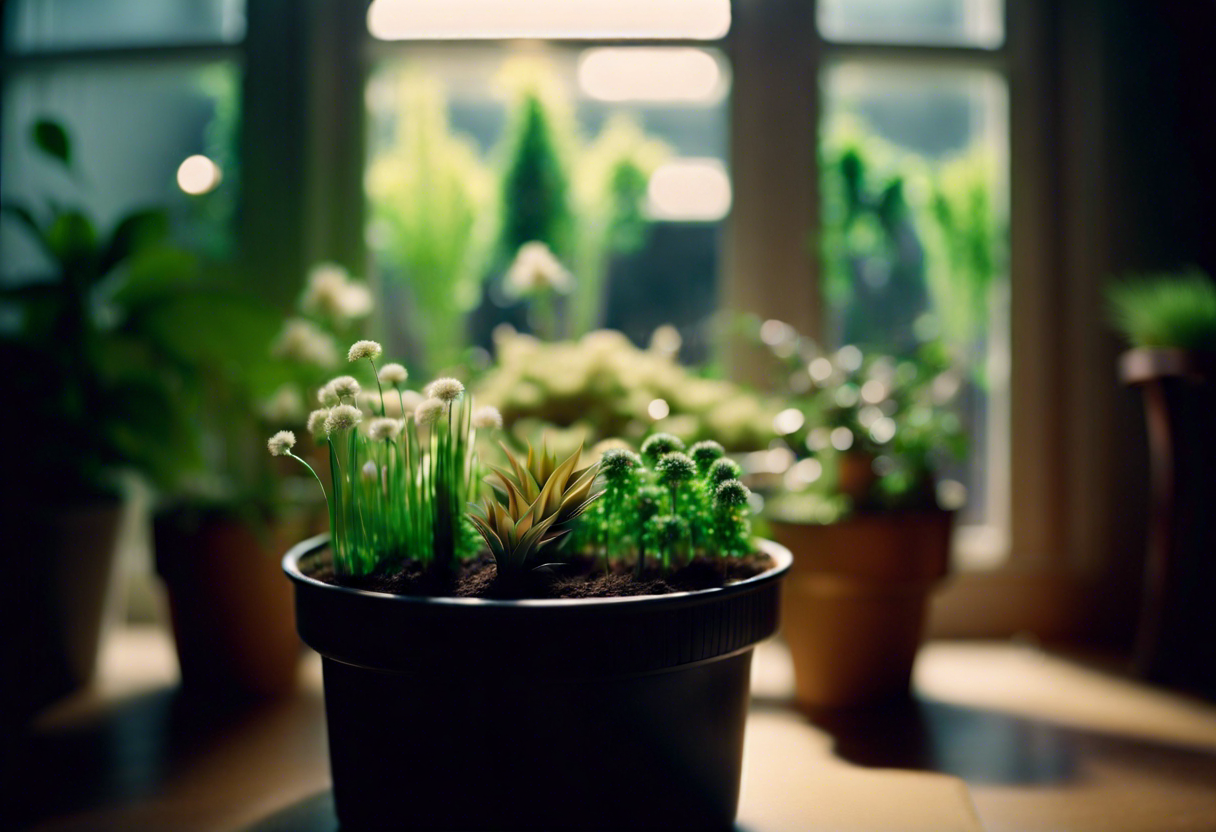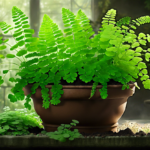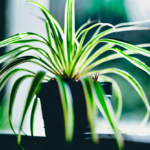Choosing the Right Plants for Your Indoor Garden
When it comes to turning your room into an indoor garden, selecting the right plants is crucial for success. Certain plants thrive in indoor environments with limited sunlight and controlled temperatures, making them ideal choices for an indoor garden. Here, we will explore some popular plant options that are well-suited for indoor gardening.
1. Succulents: Succulents are low-maintenance plants that store water in their leaves and stems. They come in various shapes, colors, and sizes, making them visually appealing additions to any indoor garden. Some popular succulent varieties include aloe vera, jade plant, and echeveria.
2. Herbs: herbs into your indoor garden not only adds a touch of freshness but also provides you with a readily available supply of culinary delights. Herbs like basil, mint, parsley, and rosemary can thrive indoors with proper sunlight and regular watering.
3. Ferns: Ferns are known for their lush green foliage, which can create a soothing and calming ambience in your indoor garden. They prefer indirect light and humid environments, making them well-suited for bathrooms or kitchens. Boston fern and maidenhair fern are popular choices for indoor gardens.
4. Spider plants: If you’re new to indoor gardening, spider plants are a great option. They are hardy, adaptable, and can tolerate a wide range of conditions. Spider plants are known for their long, arched leaves with unique white stripes, adding an elegant touch to your indoor garden.
5. Pothos: Pothos, also known as devil’s ivy, is a trailing vine plant that is highly adaptable and easy to care for. It thrives in low-light conditions, making it suitable for rooms with limited sunlight. Pothos plants come in various leaf colors, such as green, golden, or variegated.
When choosing plants for your indoor garden, consider the lighting conditions in your room. Some plants require direct sunlight, while others thrive in low-light environments. Additionally, take into account factors like temperature, humidity, and the amount of space available for the plants to grow.
Remember, with the right plant selection and proper care, you can turn your room into a vibrant indoor garden that brings nature indoors and enhances the overall aesthetic of your living space.
Essential Tools and Materials Needed for Indoor Gardening
Indoor gardening is a wonderful way to bring the beauty of nature into your living space. Whether you have a spacious room or a small apartment, transforming it into an indoor garden can be a rewarding and fulfilling experience. To successfully create and maintain your indoor garden, there are a few essential tools and materials that you will need.
-
Pots and Containers: Choose pots or containers that provide adequate drainage for your plants. This will prevent water from accumulating and causing root rot. Opt for containers made from materials such as terracotta or ceramic, as they are not only durable but also provide good airflow to the plant roots.
-
Soil: Invest in high-quality potting soil specifically formulated for indoor plants. This soil mix will provide the proper nutrients and drainage necessary for your plants to thrive. Avoid using garden soil, as it may contain pests or diseases that can harm your indoor garden.
-
Watering Can or Spray Bottle: A watering can with a narrow spout or a spray bottle is essential for watering your indoor plants. Be mindful not to overwater or underwater your plants, as both can cause harm. Check the moisture level of the soil before watering, and adjust accordingly.
-
Gardening Gloves: Protect your hands from potential scratches or allergic reactions by using gardening gloves. They will also prevent the transfer of oils and chemicals from your hands to the plants, which could be detrimental to their health.
-
Pruning Shears: Pruning shears are necessary for maintaining the shape and health of your plants. Trimming dead or damaged leaves promotes new growth and ensures that your plants stay vibrant and attractive.
-
Fertilizer: Indoor plants require regular feeding to thrive. Invest in a good-quality fertilizer formulated for houseplants and follow the instructions on the label. Be cautious not to over-fertilize, as this can lead to nutrient burn.
-
Grow Lights: If your indoor space lacks sufficient natural light, consider investing in grow lights. These artificial lights simulate the sun’s rays and provide the necessary light spectrum for photosynthesis. Choose lights that emit a full spectrum of wavelengths to support healthy plant growth.
-
Plant Mister: Many indoor plants prefer higher humidity levels. Use a plant mister to increase humidity and prevent your plants from drying out. Mist the leaves lightly and avoid spraying directly on flowers or buds to prevent damage.
By acquiring these essential tools and materials for your indoor garden, you will be well-prepared to embark on your gardening journey. Remember to research each plant’s specific care requirements and provide them with the optimal growing conditions. With proper care and attention, your indoor garden will flourish and bring beauty and tranquility to your living space for years to come.
Creating a Suitable Environment for Your Indoor Garden: Tips and Tricks
Are you eager to transform your room into a lush indoor garden? Creating a suitable environment is crucial for the success of your indoor garden. With the right conditions in place, your plants will flourish and thrive. Here are some tips and tricks to help you create the perfect environment for your indoor garden.
Lighting
Lighting is one of the most important factors to consider when setting up an indoor garden. Most indoor plants require bright, indirect light to grow. Place your plants near a window where they can receive ample light throughout the day. If your room doesn’t receive much natural light, you can supplement it with artificial lighting. LED grow lights are an excellent option as they provide the right spectrum of light for plant growth without generating excessive heat.
Temperature and Humidity
Maintaining the appropriate temperature and humidity levels is essential for the health of your indoor plants. Most indoor plants thrive in temperatures between 65-75°F (18-24°C) during the day and slightly cooler temperatures at night. Avoid placing your plants near drafts or heating/cooling vents, as these can cause sudden temperature fluctuations.
Additionally, certain plants, such as tropical varieties, require higher humidity levels. You can increase humidity by placing a tray of water near your plants or using a humidifier. Regularly misting the leaves of your plants can also help maintain adequate humidity levels.
Air Circulation
Proper air circulation is vital for preventing stagnant air and ensuring your plants receive a fresh supply of oxygen. To promote good air circulation, avoid overcrowding your plants and make sure there is enough space between them for air to flow. Using a small fan in the room can also help improve air circulation.
Watering and Drainage
Watering your plants correctly is crucial for their overall health. Overwatering can lead to root rot, while underwatering can cause wilting and nutrient deficiencies. Before watering, check the moisture level of the soil by sticking your finger about an inch deep into the soil. If it feels dry, it’s time to water your plants.
Ensure that your pots have proper drainage holes to allow excess water to escape. This prevents waterlogging and promotes healthy root growth. Placing a saucer under your pots can catch any water that drains out, preventing damage to your furniture or floor.
Avoiding Pests and Diseases
Pests and diseases can quickly take a toll on your indoor garden if left unchecked. Regularly inspect your plants for any signs of pests such as aphids, spider mites, or mealybugs. If you notice any infestations, treat them immediately with organic insecticidal soap or neem oil.
To prevent the spread of diseases, avoid overwatering your plants and ensure proper air circulation. Remove any dead or diseased leaves promptly. Quarantine any new plants before introducing them to your indoor garden to prevent the spread of pests or diseases.
By following these tips and tricks, you can create a suitable environment for your indoor garden and ensure the success of your plants. Remember to choose the right plants for your space, provide them with adequate light, temperature, and humidity, and maintain good air circulation and proper watering practices. With a little care and attention, your room will be transformed into a lush and vibrant indoor garden.
The Secret to a Thriving Indoor Garden: Maintenance Tips
Maintaining an indoor garden requires consistent care and attention to ensure the health and vitality of your plants. By following a few key maintenance tips, you can create an environment that fosters growth and helps your indoor garden thrive.
-
Watering: Proper watering is crucial for the success of your indoor garden. Each plant has different water requirements, so it’s important to understand the needs of your specific plants. Overwatering can lead to root rot, while underwatering can cause wilting and stunted growth. Check the soil moisture regularly and water your plants accordingly. Use a well-draining potting mix to prevent waterlogging and ensure adequate drainage.
-
Light: Adequate light is essential for the photosynthesis process, which is crucial for your plants’ growth. Identify the light requirements of your indoor plants and place them in suitable locations. South-facing windows generally offer the most sunlight, while east and west-facing windows receive moderate light. If natural light is limited, consider supplementing with artificial grow lights to provide the necessary light spectrum for healthy growth.
-
Fertilizing: Indoor plants may require regular fertilization to provide them with essential nutrients. Choose a balanced fertilizer or a specialized one based on the plant’s nutritional needs. Follow the instructions on the packaging for proper application and avoid over-fertilization, as it can burn the roots and harm your plants. Regularly check for signs of nutrient deficiencies and adjust your fertilization routine as needed.
-
Pruning and Trimming: Regular pruning and trimming help maintain the shape and size of your indoor plants. Remove any dead or yellowing leaves, as well as any diseased or pest-infested parts. This promotes air circulation and prevents the spread of diseases. Pruning also encourages bushier growth and can help shape the plant as it matures.
-
Pest Control: Indoor plants are not immune to pests, so it’s important to monitor them regularly. Common pests include aphids, spider mites, and fungus gnats. If you notice any signs of infestation, such as yellowing leaves, sticky residue, or tiny insects, take immediate action. Use organic pest control methods or mild insecticidal soap to prevent further damage. Quarantine affected plants if necessary to prevent the spread of pests to other plants.
-
Regular Cleaning: Dust and debris can accumulate on indoor plant leaves, hindering their ability to photosynthesize properly. Keep your indoor garden clean by gently wiping the leaves with a damp cloth or using a soft brush. This not only enhances the plant’s appearance but also allows them to absorb light and breathe better.
By implementing these maintenance tips, you can create an indoor garden that flourishes with lush, healthy plants. Remember, each plant is unique, so observe and adapt your care routine based on their specific needs. With patience and dedication, your indoor garden will bring the beauty and benefits of nature into your own home.
Managing Pests and Diseases in Your Indoor Garden
One of the biggest challenges of indoor gardening is dealing with pests and diseases that can harm your plants. Although indoor environments tend to be more controlled and protected, pests and diseases can still find their way into your indoor garden. However, with the right knowledge and preventive measures, you can effectively manage and minimize the risks. Here are some useful tips:
1. Identify and Monitor
The first step in managing pests and diseases is to identify the problem early on. Regularly inspect your plants for any signs of damage, discoloration, wilting, or unusual growth. Look for pests such as aphids, mealybugs, spider mites, and fungus gnats. Keep a close eye on the leaves, stems, and soil surface. Early detection allows for prompt action and prevents the infestation from spreading.
2. Implement Prevention Strategies
Prevention is key to avoiding pests and diseases in your indoor garden. Start by practicing good hygiene and cleanliness. Remove dead leaves, debris, and fallen flowers regularly. This helps eliminate hiding spots for pests and reduces the risk of diseases. Avoid overwatering your plants, as excessive moisture can create favorable conditions for fungal growth.
3. Natural Pest Control
Consider using natural methods to control pests in your indoor garden. For example, introduce beneficial insects like ladybugs or lacewings, which feed on pests like aphids and whiteflies. You can also make homemade insecticidal soap by mixing mild liquid soap with water. Neem oil is another effective natural remedy for several pests. Just remember to follow the instructions and test any new treatments on a small portion of your plant before applying them to the entire garden.
4. Quarantine New Plants
Before introducing new plants into your indoor garden, it’s important to quarantine them first. Isolate them for a few weeks in a separate area to check for any signs of pests or diseases. This prevents the potential spread of infestation to your existing plants. Monitor the new plants closely and treat any issues before integrating them with the rest of your indoor garden.
5. Treat Infestations Early
If you identify a pest or disease problem in your indoor garden, it’s essential to take immediate action. Research appropriate treatments or consult with a local garden center for advice. Use organic insecticides or fungicides when necessary, following the instructions carefully. Remember, prevention and early intervention are crucial in maintaining a healthy and thriving indoor garden.
Managing pests and diseases in your indoor garden requires attentiveness and proactive measures. Regular monitoring, prevention strategies, natural pest controls, quarantine protocols, and timely treatments all contribute to a healthy growing environment for your indoor plants. By incorporating these tips into your gardening routine, you can create an indoor garden that is free from pests and diseases.
Conclusion
Turning your room into an indoor garden is a wonderful way to bring nature indoors and create a vibrant and thriving space. To get started, choose the right plants for your indoor garden based on their light requirements, care needs, and your personal preferences. Consider plants that thrive in low light conditions if your room doesn’t receive much sunlight. Research and gather the essential tools and materials needed for indoor gardening, including pots, potting soil, fertilizers, and watering cans, to provide your plants with the best growing conditions.
Creating a suitable environment for your indoor garden is crucial for the success of your plants. Pay attention to factors such as light, temperature, humidity, and air circulation. Place your indoor garden near a window or use grow lights to ensure your plants receive adequate light. Maintain an appropriate temperature range and humidity level by using a thermometer and a humidifier if necessary. Adequate air circulation can be achieved by opening windows or using fans.
To maintain a thriving indoor garden, it is essential to follow some key tips. Water your plants regularly, but be careful not to overwater them. Different plants have different watering needs, so it’s important to understand the requirements of each plant. Fertilize your plants according to their needs and the instructions provided. Regularly prune and trim your plants to encourage healthy growth and prevent overcrowding. Monitor your plants for any signs of pests or diseases and take prompt action to manage them effectively.
Managing pests and diseases in your indoor garden is crucial to maintaining a healthy and thriving space. Inspect your plants regularly for signs of pests such as aphids, spider mites, or mealybugs. If you notice any infestation, isolate the affected plant and treat it accordingly using natural or chemical methods. Prevention is key in avoiding diseases, so ensure proper plant hygiene, good air circulation, and avoid overwatering or overcrowding plants. If diseases do arise, identify the issue early and take appropriate steps such as pruning affected parts or using organic treatments.
Transforming your room into an indoor garden can be a rewarding and enjoyable experience. By choosing the right plants, providing them with the necessary tools and materials, creating a suitable environment, and following proper maintenance and pest management practices, your indoor garden will flourish. So, go ahead and embark on this green journey, bring nature indoors, and enjoy the beauty and benefits of your very own indoor garden!


